Kanjeevaram sarees gets its name from the city of its origin Kanchipuram, located in Tamil Nadu, India. This variant of sarees is famous all over the world for its aesthetic and classic glance. Kanchipuram Silk sarees are made up of vibrant colors and thick fabrics, with a touch of gold at the borders, enhancing the look.
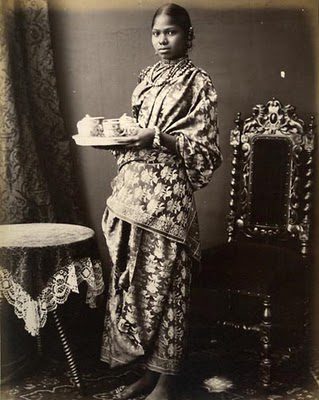
It’s believed that Kanjeevaram is dated back to Hindu mythology and its weavers are considered as the offspring of Markanda, who was known for weaving God’s clothes. Originating from the remote town of Kanchipuram in Tamil Nadu, it has a history of more than 400 years, where the Devangas and Saligars migrated from Andhra Pradesh to the village of Kanchipuram. They utilized their weaving skills and started to weave these mesmerizing silk sarees. The designs of these sarees were inspired by the temples and monuments around the village, Which added creative appeal to it.
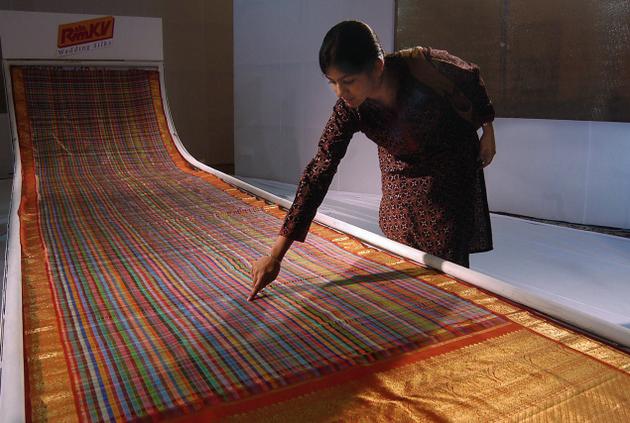
Kanchipuram silk sarees are differed by their rich gold borders, traditional designs, and dense fabric in contrasting colors. The more than 150-year-old tradition is entirely handwoven from processed silk yarn and Zari, a silver silk thread coated in gold. They are woven from pure mulberry silk thread and Zari. The mulberry silk is based in South India, while the zari comes from Gujarat. The yarns are first dipped in rice water and then sun-dried, which makes them thicker and stiffer and also increases their strength. Following this, the silk threads are intertwined with silver wire and then a gold wire is used to complete the weave. As a result, the fabric comes stronger and durable, however, this can make the saree heavy (up to 2 kilos) and a bit expensive. About 250-300 threads are used to weave it into a wept and keep it bulky.
The wide contrast borders of sarees set them apart. Traditional Kanchipuram saree designs include temple borders, checks, stripes, and floral (buttas). Kanchipuram saree patterns and designs were inspired by images and scriptures found in South Indian temples, as well as natural elements such as leaves, birds, and animals. These are sarees with a rich woven pallu depicting Raja Ravi Varma’s paintings as well as epics from the Mahabharata and Ramayana. The cost of Kanchipuram sarees varies greatly based on the complexity of the work, the colors, the design, and the materials used, such as zari (gold thread). Silk is also noted for its high quality and craftsmanship, which has contributed to its popularity.
The border is frequently a distinct color and pattern than the body. If the pallu (the sari’s hanging end) needs to be woven in a different color, it is first weaved separately and then delicately connected to the sari. A zigzag line is often used to indicate the point where the body joins the pallu. The body and border of a genuine Kanchipuram Silk Sarees are weaved separately and then fused. The border will not detach even if the saree tears because the junction is so robust. This distinguishes Kanchipuram silk sarees from the rest. A few of the special features which differentiate Kanchipuram silk sarees from others lie in their texture, glimmer, permanence, and refinement which is why it is popularly known as the queen of all sarees.
Started as a 9-yard wonder, these Kanchipuram silk sarees have always been high on demand for every traditional occasion. Due to its great popularity, a six-yard weave was also included later. There are different types of Kanchipuram sarees which include:
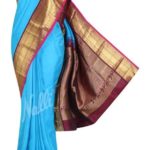
The saree has a contrast woven border or a zari border with a one-color base and a zigzag bordering that sits at the end of the saree.
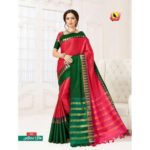
What distinguishes them is the temple border (triangular or zigzag) design on the saree edge border or between the pallu and the body section.
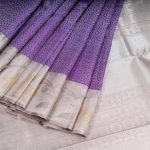
The latest types of motifs and decorations are combined to create a wonderful Kanchipuram modern saree, with hues other than conventional ones
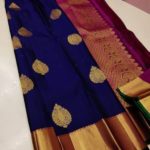
Traditional are made out of gorgeous checks, coin or chakra designs, temple borders, and traditional hues, and are typically worn for puja and weddings as a bridal saree.
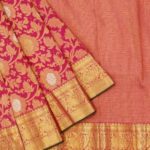
We all love those, which can be scattered around the body of the saree in flower or paisley motifs and have a portion of zari pallu.
Talking Threads by Pearl Uppal (Gurgaon): it is located near infotech park, phase 2, and has a perfect balance between contemporary designs and Indian craftsmanship, their collection has a variety of unique designs perfect for the wedding season.
KRIations Delhi (NCR): Delhi-based KRlations was founded by Krtika Juneja and is making brides look the best through WedMeGood for 2 years 7 months. As a designer, their creations are luxurious and have a variety of options for brides for every occasion. The color combinations of their apparel are well appreciated and embroidery is unique for every piece of apparel.
Pakeeza Plaza (Chandani Chowk): it is located near Katra Pyare Lal, considered as one of the leading ethnic wear manufacturers and exporters For over a decade, they cater to their customers with a wide range of bridal sewing and trousseau choices.
IOJO (Rajouri Garden): located at the Rajouri Garden market, this brand is based on India’s rich heritage and culture. They are truly based on their ideas and designs on modern and urban culture. Designers wear clothing without a big hole in the pocket as IOJO offers both buyers and designer equipment at an affordable price.